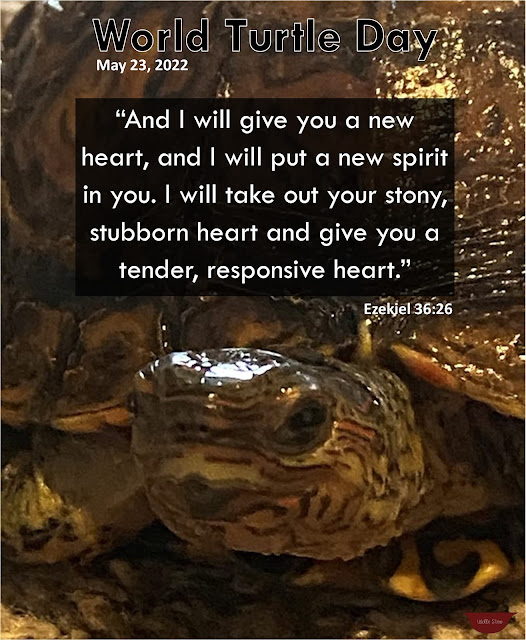Pledge of Allegiance Day | JOY for Today
The Pledge of Allegiance is a promise. When we say it, we connect as citizens. When we mean it, our country is strengthened. Loyal citizens solemnly committed to work together toward a moral cause under a God who is only good and always faithful builds a strong framework for enduring JOY.
Pledge of Allegiance Day | September 8th Annually
JOY for Today Offerings:
- Did You Know... Five Pledge of Allegiance facts we didn't.
- Wolfe Stew Connects with commitments.
- Bible Verses and Quotes inspired by promises.
- Activity Suggestions Pledge of Allegiance comprehension; Classroom pledge creation; Discussion questions; Family pledge
- Patriot Day (September 11th Annually)
- Fall Equinox (Late September, when the Sun crosses the celestial equator going south)
- Johnny Appleseed Day (September 26th Annually)
Did You Know:
- We are on the third revision of the Pledge of Allegiance? The first, written by Francis Bellamy in 1892, was written for use in any country. It excluded the phrases "of the United States of America" and "under God". In 1923 the first missing phrase was added and the second in 1954. (USHistory.org)
- President Eisenhower added the words "under God"? As a response to the Communist threat, on Flag Day in 1954 Eisenhower signed a bill adding "under God" to the Pledge of Allegiance. Representative Rabaut, of Michigan, lobbied for the addition of the phrase saying that it would provide students with a deepened understanding of true patriotism. A sermon delivered by Rev. Docherty in Washington D.C. sealed Eisenhower's decision. In the sermon, Docherty submitted that an omission of God in the pledge omits "the definitive factor in the American way of life". (USHistory.org & History.com)
- A code exists regarding pledge recitation expectations? If you're non-military, you stand and face the flag while covering your heart with your right hand. If you are wearing headwear that is non-religious in nature, you remove it and place it over your heart with your right hand. Members of the military salute the flag and remain silent during recitation. (USHistory.org & ArmyStudyGuide.com)
- The original pledge recitation looked quite different? Bellamy originally proposed that students began with a military salute and extended their hands outward after saying "to the flag." This choreography too closely resembled the Nazi salute, so was altered to today's routine during WWII. (USHistory.org)
- The 400th anniversary of Columbus' American arrival was the pledge's original inspiration? Promoting a children's magazine, Bellamy coordinated patriotic public-school programs that would coincide with the Columbian Exposition opening ceremonies. A central act of the program was the schoolchildren's new flag salute. (SmithsonianMag.com)
We'd Love to Know:
Which of these facts would you share with your learners?
Wolfe Stew Connects
A pledge of allegiance is a solemn promise of loyalty. Daily, Americans recite the Pledge of Allegiance throughout the country - in schools, at public events, and in government sessions. But do we mean what we say? As you recite it, how often do you think about the words and seriously recommit to patriotism?
Promises in general are made lightly. We tend to expect people to not keep their word. Marriages often end in divorce, baptisms tend to be a rite of passage, and oaths fulfill a requirement for a desired position. Why don't we pledge seriously anymore?
In The Men We Need, Brant Hansen suggests it's because we desire to be free agents (143). We want to leave all our options open, which means not committing. Commitment, after all, means binding ourselves to something or someone. A decision to commit means cutting off all other options. In fact, decision shares its root with "incisor" and "scissors" (Hansen 142).
And it is a challenge, cutting off every other option. In an effort to share this concept with our nephew, I suggested that he was committed to the cereal Krave (because he eats it nearly every morning). I further explained that commitment meant he would never choose another cereal because he cut out every other option. He looked at me with uncertainty. Even though he's unlikely to choose another cereal in the foreseeable future, he was not willing to commit to Krave.
While commitment to a cereal is something I would never expect anyone to take seriously, I do think it illustrates the point: cutting off options is challenging. Making decisions is hard. We live in a culture where decision fatigue is a real struggle. Pringles alone offers thirty-four choices (Hansen 142).
But it hasn't always been this way. We used to take commitments seriously, make decisions morally, and regard the effects on others heavily. Nancy Pearcey, author of The Toxic War on Masculinity, describes the transition from covenants to contracts during the Industrial Revolution. Our country's founders bound themselves to one another through covenants, moral vows to seek the common good of everyone in the relationship, which reflected Biblical tradition - most notably The Ten Commandments. But, during the Industrial Revolution, we erased moral obligation from the workplace by inserting contracts that were about exchanges of goods and services that protected self-interests and included opt-out clauses (Pearcey 98). We like keeping our options open for self-seeking reasons and often avoid commitment.
So, why should we commit? When I commit to something or someone it makes decision-making way easier. I have guidelines for when to say yes and when to say no. "Commitment means closing certain doors in favor of opening a better one." (Hansen 142). The secret is figuring out what doors you want to leave open. Some commitments may last a lifetime, others ebb and flow. But one I am committed to keeping reflects the one God made to me: "I will be His daughter and He will be my God." (Adapted from Jeremiah 32:38)
Let's be a people whose yesses mean "YES," and whose noes mean "NO" (Matthew 5:37). Let's only make pledges that we can commit to, ones that reflect our morals and deepen our relationships. Let's cut off the things that pull us away.
In response:
- Make a list of your current commitments. Cross off any that don't reflect your morals or harm your relationships. Use your commitment list as a decision-making tool. Say "yes" when the decision adds to your commitment and "no" when it detracts.
- Commit to recognizing and reflecting exemplary behavior with us as we study Proverbs 31:18 and 31. Last week, we considered various recipients of and reasons for praise received in the gates. Next week, we will study the necessity of reaching out to the poor and needy.
Bible Verses and Quotes
Bible Verses
- "When one of you men makes a promise to the Lord, you must keep your word." Numbers 30:2 CEV
- "Keep in mind that the Lord your God is the only God. He is a faithful God, who keeps his promise and is merciful to thousands of generations of those who love him and obey his commandments. Deuteronomy 7:9 GW
- "Ask, and it shall be given you; seek, and you shall find; knock, and it shall be opened unto you. Matthew 7:7 KJV
- "When thou passest through the waters, I will be with thee; and through the rivers, they shall not overflow thee: when thou walkest through the fire, thou shalt not be burned; neither shall the flame kindle upon thee." Isaiah 43:2
- "Likewise also the cup after supper, saying, This cup is the new testament in my blood, which is shed for you." Luke 22:20 KJV
Quotes
- "Unless commitment is made, there are only promises and hopes...but no plans." Peter Drucker
- "Diamonds have an image of purity and light. They are given as a pledge of love and worn as a symbol of commitment." Peter Singer
- "I pledge allegiance to the Christian flag, and to the Savior, for whose Kingdom it stands, one Savior, crucified, risen, and coming again, with life and liberty for all who believe." The Chirstian Pledge of Allegiance
- "Let God's promises shine on your problems." Corrie Ten Boom
- "In the same way the sun never grows weary of shining, nor a stream of flowing, it is God's nature to keep His promises. Therefore, go immediately to His throne and say, 'Do as You promised.'" Charles Spurgeon
We'd Love to Know:
Study the Pledge of Allegiance
- Video explanation of The Pledge of Allegiance by Red Skelton at YouTube
- Written explanation of The Pledge of Allegiance at Flags of Valor.
- Make your own The Pledge of Allegiance mini book. Write a phrase on each page and have learners write (or draw) what it means to them.
Classroom Pledge
Choose or draft your own classroom pledge.
Discuss "Would You Rather..." Questions
- Make a pledge to your country or to your family?
- Say the pledge or sing the national anthem?
- Write the pledge in print or cursive?
If you would like three "Would You Rather...?" questions for every September day, download this Wolfe Stew PowerPoint or get it (for free!) at our TPT store.
Take on the Family Challenge
What promises would your family pledge to? Write them down and craft a family pledge.
We'd Love to Know:
How you teach your learners the Pledge of Allegiance.
We’re excited to share one more day with you and wish you JOY for Today and HOPE for Tomorrow.
Your Partners in JOY Finding,
Sample these related posts:
Find even more JOY for Today in our monthly calendars, holiday, and seasonal posts.





Comments
Post a Comment
Thank you for adding your flavor to the stew.